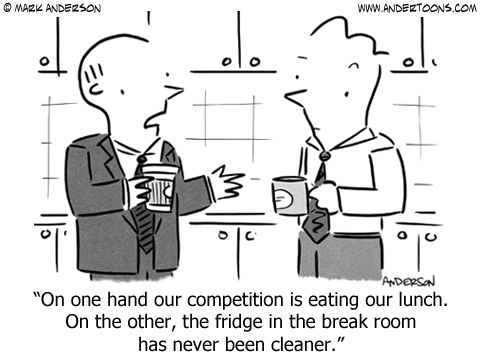 Brown Bag Lunch Money Savings Calculator
Brown Bag Lunch Money Savings Calculator

This calculator is designed to demonstrate how much you can save by bringing your lunch to work (AKA brown bagging) instead of eating out. Also, it can show how much you can increase this savings by investing it. First provide the average cost of a meal brought from home and the average dollar amount you tend to spend on lunch out. Then enter the number of times you eat out per week at work and the number of years you’d like to calculate your savings for. Finish up by entering an interest rate you could obtain by placing your accrued savings in a savings account.
Press CALCULATE, and you’ll see your total brown bag savings and interest accrued. You’ll also see the future balance of your brown bag savings account.
Today's Seattle Savings Rates
The following table shows current rates for savings accounts, interst bearing checking accounts, CDs, and money market accounts. Use the filters at the top to set your initial deposit amount and your selected products.
Brown Bagging It: How Packing Your Lunch Can Help You Save

Frugality is a lifestyle. Making conscientious choices now in order to protect your future represents a disciplined approach, paving the path to a comfortable retirement. If you want to savor your golden years in financial security, there is a simple step you can take that will provide myriad benefits. All you need to do is pack a lunch.
How Much Are You Currently Spending?
The idea of packing a lunch may seem like a ridiculous investment opportunity to some. These folks do not understand the hidden currency of the land, interest. Consider for a moment how your lunch behavior can impact your bottom line.
How much do you spend on lunch each day? Even if you are the soup and sandwich type, you're probably spending $6 daily for your meals. Now consider that there is an average of 250 work days each year. Have you realized that your annual lunch food expenditure is $1,500? You are just buying soup and a sandwich. The whole point of such a purchase is to keep your costs down.
Some readers are probably gulping uncomfortably right now. You like to enjoy a more fulfilling lunch, preferably at a nice restaurant. Even if you prefer chain locations, you are probably spending $15 for a basic burger, drink, and tip. If that behavior describes you, the shocking news is that you are spending $3,750 annually on lunch.
Do those numbers seem high? Even if you only eat out a couple of times a week, the costs are still standard. So, you can easily calculate your expense predicated upon the percentage of time you choose not to eat in the break room.
If the answer is once a week, your expenses are 20 percent of the above. If you dine out twice a week, it's 40 percent and so on. No matter how often you eat out, you are paying a constant daily rate. It's fair to say that the daily lunch rate for the average person is about $10. Over the course of a year, that's $2,500 for 250 work days.
How Much Would Bringing Your Lunch Cost?
Your natural response to the above is to think that you have to pay for the food you bring to work as well. While true, the difference in expenses is dramatic. The explanation depends on how far you are willing to stretch your food budget.
Let's say that you want to stay with the sandwich concept. Luncheon meat, bread, and a bag of chips has a cost of under $10, and it will last for a week's worth of lunches. That's a cost of $2 a day for 250 work days, a grand total of $500. You have cut costs by at least 67 percent and potentially as much as 87 percent.
If you don't mind heating your own bowl of soup or eating some ramen noodles, there are even cheaper options available. The point of this exercise is not to make you eat like a poor college student, though. Saving money does not automatically require reduced quality of life. What is being established is exactly how much you can save in the short term as well as exactly what that means in the long term.
How Much Money Can You Earn by Brown-Bagging Lunch?
Let's use $500 as the basis for your food cost for packing your own lunch and $2,500 as the amount for eating out. The difference is $2,000 in annual savings. Every five years, you have saved $10,000. With the extra money, you could easily pay other bills such as your electricity or internet connection. That is not the best use of your money, though.
Think of the situation this way. You are already accustomed to spending your food budget. You can use the new-found money as an opportunity to enhance your savings not just now but in the long term. If you invest correctly, you can garner at least 3 percent. After a year of interest, you will have $2,060. Plus, you will be making an average monthly addition of $166.67.
If you are unfamiliar with long-term interest, this next statistic might shock you. After 30 years of investing at 3 percent interest, that money you saved from bringing your lunch will have expanded dramatically in value. You will have $100,007.26 in savings. If you direct the money toward a 401k program, even greater savings are available. How does packing a lunch sound now?
While the immediacy of a bite to eat at a restaurant is tempting, the long term financial benefits of packing a lunch are unmistakable. Eat smart and live well in your golden years.

Change privacy settings
